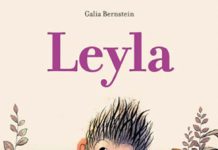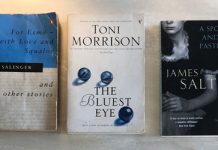The Rolling Stones considered it for a recording studio; the Liberal Party wanted it as a South West headquarters; the Goodies allowed a giant dog to burst through its walls and thousands came to tramp through its grounds during Open Days. But it is as a unique educational establishment that Parnham House will be remembered by many. At this year’s Beaminster Festival John Makepeace will be talking about some of his memories of Parnham House. He talked to Fergus Byrne.
For anyone not already aware of recent events, an internet search on Parnham House will result in many pages of details and photographs about the recent fire that shocked so many local residents: it was a jolt that spread far beyond the local community. Parnham House meant many things to many people but beyond the impact and personal devastation for the family that called it home, the house also provides a legacy for hundreds of people that stayed there throughout the late seventies, eighties and nineties: designers and furniture makers that are now spread across the globe.
April 2017 marked the anniversary of the launch of what was then called the School for Craftsmen in Wood, a school for furniture makers based at Parnham House. The project, initiated and run by John Makepeace, was announced by a full-page article in The Times written by Prudence Glyn, as well as a smaller feature in the Daily Telegraph. The publicity resulted in enquiries from enough potential students to fill the first year’s intake. Ironically, exactly forty years later to the month, the same newspapers carried a much sadder story about the fire; made even more poignant because it happened exactly a week after a reunion that had seen 120 past students of the furniture college gather together for the first time since they had left.
It is therefore fortunate that, through one of those quirky coincidences that history will thank us for, John and Jennie Makepeace had been working since the middle of last year on a book about the history of what eventually became Parnham College and it is to be published in July. It is a project that John has wanted to pursue for decades. Speaking from his home in Beaminster he explained: ‘I was always quite keen on a book because it’s never been recorded and books are really important in the history of things.’
Entitled Beyond Parnham, in the introduction Sir Christopher Frayling, who was rector of the Royal College of Art for thirteen years, defines the role of the college as ‘a place where the hand, the head and the heart could be brought together through the making and designing of craft furniture’. He also describes it as ‘an impossibly romantic setting—a sort of Manderley for makers.’
For John Makepeace the school itself was a result of his belief that there was a need for somewhere that furniture makers could learn, not just their craft, but also how to make a living from that craft. He explained: ‘I had concluded that there ought to be somewhere that people could go and learn to design, to make and to run a business.’ The idea had been triggered by his involvement with the Royal College and many of the craft organisations, as well as with the Oxford business school. As a designer and maker, he was already building a reputation for himself but felt that in the education system, ‘the disciplines of making, design and management were poles apart’. He believed that the three disciplines each considered their own sphere to be independent and ‘almost superior’. Feeling that these attitudes resulted in an anti-entrepreneurial approach, he set out to develop an educational environment that could offer students an all-round experience that would help them to, not only grow their talents, but also grow their businesses, or at least their understanding of commercial skills.
The School for Craftsmen in Wood offered a two-year course attracting people from a wide range of backgrounds. From Royal connections to the son of a coffin maker, the varied intake eventually created a diversity of output that saw past Parnham students going on to design for industry, retail, and manufacturing, as well as helping create luxury yachts, palatial homes and civic buildings… and of course, spectacular furniture.
Viscount Lindley, who began his course in September 1980 remembered the passion that drew such different people to the course: ‘Our group of students ranged from eighteen years old to second-careerists of a certain age, from diverse backgrounds but all drawn together determined to be master craftsmen.’ He remembered his time at Parnham with great affection saying: ‘I owe my subsequent career to the many people whom John Makepeace brought together to revitalise the modern Arts & Crafts movement.’
Juliane Trummer, who studied at Parnham in the eighties said that when she finished her course she felt ‘empowered and full of plans for the future.’ She went on to spend nine years as part of the multidisciplinary team who worked on the 787 Dreamliner interior design development. She was involved in early research, strategy definition, conceptualisation and implementation. ‘Working on the 787’ she said ‘felt like a “once in a designer’s lifetime” opportunity. My work experience also provided me with the co-ownership on eighteen US patents, one for IBM and seventeen for Boeing.’
Sarah Kay, who graduated in 1996 and now lives between London and the foothills of the French Pyrenees where she has a workshop, continues to offer consultancy to organisations like Heal’s and SCP whilst still working on bespoke design and making. She also recalled the beauty of the house that drew so many people together. ‘The first impression of Parnham College was of this beautiful Tudor manor house’ she said. ‘It was romantic and idyllic and helped make the whole experience totally immersive. The magic never wore off – there were bluebells in the spring, beautiful walks whatever the weather (especially across the fields to the Eight Bells in Beaminster), the Jurassic coast a short drive away … Sometimes I have wished that I’d gone to Parnham earlier, but to go back to college when you are thirty and KNOW what you want to do was the most liberating and exciting experience.’
Guy Martin, a Design Tutor at Parnham College was one of the sculpture winners of the Marshwood Arts Awards in 2013. He described Parnham as a ‘place of transition, even a rite of passage for some’. He recalled that the working budget enabled him to invite a diverse range of practicing professionals to contribute to each project, enriching the experience. The varied levels that were offered to help enrich that experience even included presentation as John Makepeace recalled: ‘One of the interesting things we put into the course was having a week with a couple of actors. It was to try to get people to express themselves and be able to tell their story, to help with confidence and the ability to sell themselves. It’s easy for people who make things to think that’s the end of it.’
John’s memories of first moving in include some of the trials that come with taking on such a huge challenge. ‘We had forty buckets in the attics collecting rain’ he recalled. The house was ‘leaking like a sieve’. The boilers were ‘ancient’ and ‘some of the early students told stories of how the water in their glass would freeze overnight’. But for John and also for the 210 students that went through the doors ‘it was part of an adventure.’
That adventure was re-lived when so many past students gathered the week before Parnham House burned down. ‘There was this fabulous celebration of people coming together’ said John ’with huge passion and friendship and delight for coming together. And the poignancy of that set against the horror of a fire a week later… There were thousands of people who loved Parnham. Not just the students but the public and everybody who was involved. Within days we had had messages from Australia, South Africa, America—friends and friend of friends, it was quite extraordinary.’
Remembering her time at Parnham House, Alice Robin, who now lives in Nelson, New Zealand, perhaps summed up what many others also felt when she described its effect on her: ‘The course was a unique coming together of hand, eye, mind and heart—in a nourishing atmosphere of shared workshops, great friendships, passionate production and creativity that saw us raring to go in the workshops at 8am. … and still there at 10pm. It changed my life.’
There will be an inevitable element of poignancy to John Makepeace’s talk at this year’s Beaminster Festival on June 26th. However it will also be an opportunity to celebrate some of the huge achievements of those that passed through the college. The book, Beyond Parnham, described by arts writer Emma Crichton-Miller as ‘an appropriate tribute to a visionary enterprise’ and ‘indispensable for anyone with an interest in Britain’s creative past and future’ is available to pre-order now and pre-ordered copies will be distributed in July.









